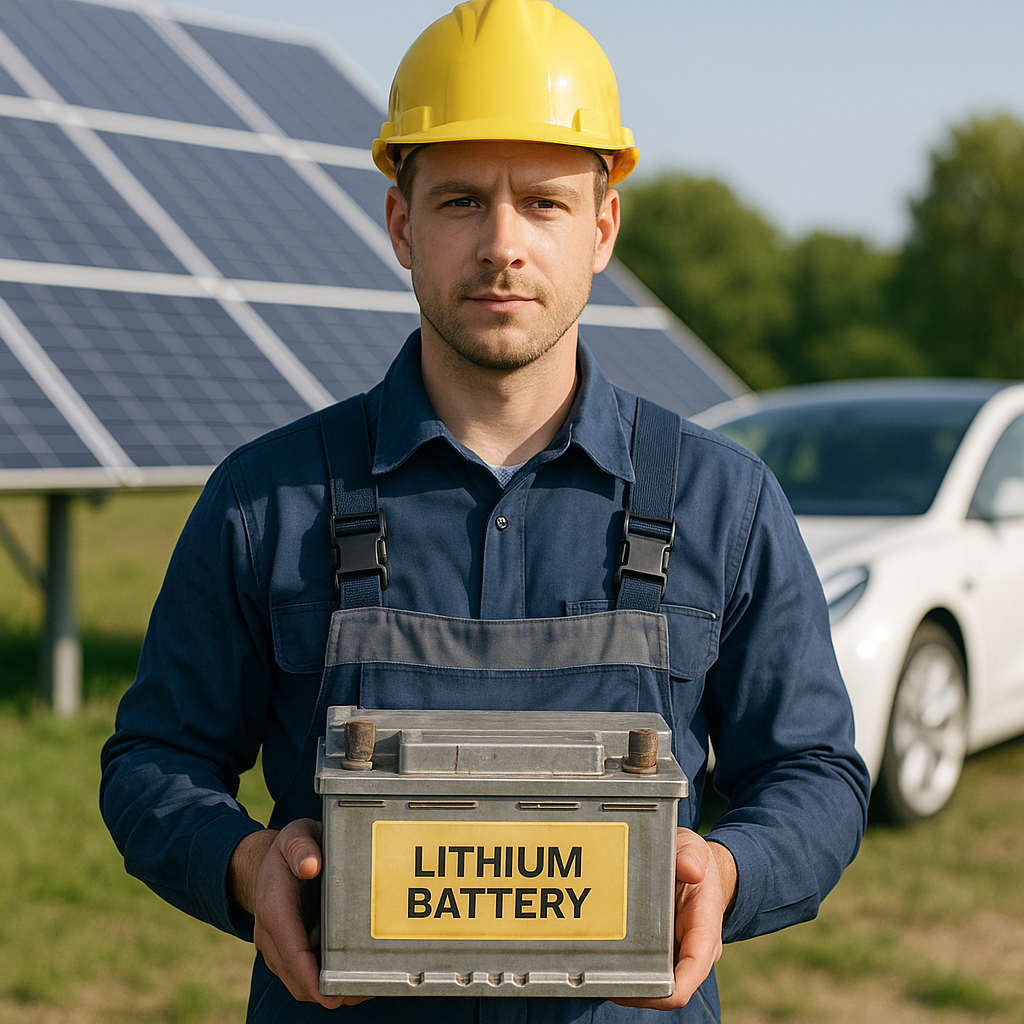5901 Botham Jean Blvd, Dallas, TX 75215
Lithium Battery Reuse: How Second-Life Batteries Power Energy Storage and Sustainability
August 31, 2025Every day, thousands of lithium-ion batteries reach the end of their first life in our phones, laptops, and electric vehicles. However, this doesn’t mean they are ready for recycling. Reusing lithium batteries gives these power sources a valuable second act, extending their usefulness well beyond their original purpose.
When lithium-ion batteries can no longer meet the demanding requirements of electric vehicles or consumer electronics, they still retain 70-80% of their original capacity. This remaining power is sufficient for less intensive applications. Instead of heading directly to recycling facilities, these batteries can be repurposed for stationary energy storage systems.
This second-life approach offers practical solutions for renewable energy storage, grid stabilization, and backup power systems. A battery that once powered a Tesla might later store solar energy for a home or help balance electricity demand at a utility substation. The environmental benefits are significant—reducing waste, conserving resources, and delaying the energy-intensive recycling process until absolutely necessary.
What Are the Benefits of Lithium Battery Reuse?

Reusing lithium batteries provides environmental, economic, and technological benefits, making it essential for sustainable energy management. By extending the life of batteries beyond their initial use, the immediate demand for raw materials like lithium, cobalt, and nickel is reduced, cutting down on intensive mining and refining processes. This minimizes environmental degradation and lowers carbon emissions associated with battery production.
Economically, second-life batteries offer more cost-effective energy storage solutions than new systems. Utilities, businesses, and homeowners benefit from reduced costs while maintaining reliable power storage. Additionally, second-life applications help stabilize the energy grid, decrease reliance on fossil fuels, and promote the growth of renewable energy technologies. By keeping batteries in use longer, we enhance resource efficiency and decrease the volume of waste sent to recycling facilities prematurely.
Challenges and Limitations of Second-Life Batteries

While reusing lithium batteries offers many opportunities, it also presents challenges that require careful management. A significant issue is variability—batteries degrade differently based on their age, usage patterns, and operating conditions. This demands thorough testing and sorting to ensure safety and performance in their second life. Without proper management, uneven performance among reused modules can lead to system inefficiencies or failures.
Another limitation involves safety concerns. Even partially depleted batteries have stored energy and can pose risks, such as overheating, fire, or leakage, if mishandled. Regulatory standards for second-life batteries are still developing, creating uncertainty for manufacturers and consumers. Moreover, second-life systems may not meet the high-performance requirements of certain industrial or critical infrastructure applications, making them more suitable for specific stationary or backup power uses.
How Does the Lithium Battery Reuse Process Work?

The lithium battery reuse process transforms end-of-life batteries into valuable energy storage assets through a systematic approach. Most lithium-ion batteries retain about 70-80% of their original capacity when they reach the end of their first life in electric vehicles or other applications. This remaining capacity makes them ideal candidates for second-life applications in stationary energy storage systems.
The Battery Reuse Workflow
The journey from retired batteries to functioning energy storage systems follows several key steps:
- Battery Collection: The process starts with gathering end-of-life lithium-ion batteries from various sources, including electric vehicles, consumer electronics, and industrial applications. These batteries are transported to specialized facilities equipped to handle them safely.
- Capacity Testing and Sorting: Each battery undergoes rigorous testing to assess its remaining capacity, internal resistance, and overall health. Batteries are then sorted based on their performance metrics, with those retaining 80-85% of their original capacity identified as prime candidates for reuse in stationary applications.
- Disassembly: Battery packs are carefully disassembled to access individual modules. This step requires specialized knowledge and equipment since batteries may still contain charge and potentially hazardous materials.
- Module Selection: The modules with similar capacity and performance characteristics are grouped together. This matching process ensures the reconfigured battery system will function optimally with balanced cells.
- Reconfiguration: Selected modules are reconfigured into new battery systems designed specifically for their intended second-life application. This includes rewiring, installing new battery management systems, and integrating thermal management solutions.
Once reconfigured, these battery systems receive final testing to verify performance and safety before deployment in their new roles.
Applications for Reconfigured Battery Systems
The reconfigured battery systems find new purpose in various stationary applications:
Energy storage systems using second-life batteries provide reliable backup power for critical infrastructure while reducing resource demands. They help smooth out the intermittent nature of renewable energy by storing excess solar or wind energy during peak production and releasing it when production drops.
Grid services represent another valuable application. Second-life batteries can provide frequency regulation, peak shaving, and load balancing to help stabilize the electrical grid. Commercial and industrial facilities use these systems to reduce peak demand charges and create more resilient power systems.
The integration of second-life batteries into renewable energy storage solutions offers multiple benefits. It extends battery life by 5-10 years beyond their original use, reduces waste destined for recycling facilities, and provides cost-effective storage solutions that make renewable energy more accessible.
The success of battery reuse depends on properly assessing remaining capacity and matching it to applications where performance requirements align with the batteries’ capabilities. As more electric vehicles reach end-of-life in the coming years, the potential for second-life battery applications continues to grow, creating a sustainable bridge between initial use and eventual recycling.
Future Outlook for Lithium Battery Reuse

The future of lithium battery reuse is promising, driven by rapid growth in electric vehicles and renewable energy adoption. By 2030, analysts expect millions of EV batteries will be available for repurposing, providing a substantial secondary supply of energy storage capacity. Advances in diagnostic tools and artificial intelligence are expected to speed up and enhance testing, making it easier to identify suitable modules for second-life use.
Simultaneously, research into standardized designs and modular battery packs could simplify reuse and reconfiguration. Global collaboration between automakers, recyclers, and energy providers will be essential to establish consistent guidelines and safety standards, advancing the large-scale deployment of second-life battery systems. With proper investment and innovation, lithium battery reuse could become a key strategy bridging the gap between sustainable energy storage and full-scale recycling.
Conclusion: The Future of Lithium Battery Reuse
Lithium battery reuse is crucial for sustainable energy management as we advance toward a greener future. The increasing adoption of electric vehicles provides a valuable source of batteries that can be repurposed for second-life applications in energy storage systems. This circular approach helps prevent the premature disposal of still-functional batteries and ensures maximum value is extracted from materials that required significant resources to produce.
As battery technology continues to progress, so will our capacity to efficiently repurpose and recycle these essential components. For organizations aiming to implement sustainable battery management practices or explore recycling options for lithium-ion batteries, contact Okon Recycling at 214-717-4083.
